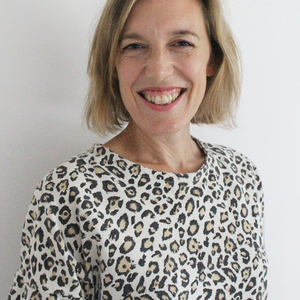Insights
INSIGHTS
All Topics
The virtues of working in the open
28 Oct 2021by Mary Wessel
Encouraging sector-wide learning. Saving time and money. Building strong networks. There’s a lot to be said for working in the open
Working in the open could also be referred to as sharing your work or using work shared by others. It’s a generous and collaborative way of working – both internally and externally.
In this context, work can refer to a number of things. It could be a specific resource, such as a user journey for a new volunteer enrolment app you’re developing, or findings from a service user survey that’s relevant to other organisations.
But equally, it could mean sharing things that you’ve learnt or experiences you’ve had in running a project. For example, you could blog about projects being worked on, talk about project developments with networking groups, or tweet about a project milestone you’ve met.
Why work in the open?
Ninety-four per cent of charities on the Catalyst development programme said that open working is something they’ll be taking into the future. So it’s got something going for it. Benefits of working in this way include:
Transparency
With trust being crucial to a charity’s success, open working shows donors and supporters how their money is being spent and what benefits it will bring about.
Generate interest
Generate interest both internally and externally. This will help to get internal stakeholder buy-in to projects or create good PR for the organisation as a whole.
Sector-wide learning
Widely sharing knowledge, information, and resources with other organisations means that collectively we can save time and money. By building on existing learning or repurposing resources, organisations can help more people, more quickly.
Building strong networks
Open working by nature is reciprocal. By sharing learning and experiences, collaborative relationships are built and strengthened for the benefit of individual charities, the sector, and, ultimately, service users.
Digital for good
Catalyst is a collaborative, helping charities and social enterprises to develop digital skills and processes for good. Open working has been front and centre for many of the charities and agencies involved.
They’ve learnt to work openly in ways including writing and publishing weeknotes, sharing design assets for others to re-use, and sharing learning and reflections of their work.
The wealth of information shared by programme participants shows the variety of ways that organisations can work in the open and the benefits of doing so. They also have a collection of practical guides, or recipes, to help charities reuse resources and learn from one another.
Sharing resources to combat ageism
Earlier in 2021, The Centre for Ageing Better launched a new free picture library – one which has positive and realistic images of older people. Typically stock images of older people tend to fall into two categories: frail and vulnerable or unrealistically positive (such as older people enjoying extreme sports). This library aims to challenge those stereotypes and sits alongside a suite of age-positive icons.
According to Yehia Nasr, Digital Officer: “The motivation behind making it free and publicly available was partly because I knew how difficult it was for a lot of charities especially to find affordable or free images that aren’t stereotypical or negative, so we wanted to make it as accessible as possible.
"We also want to combat the ubiquity of these negative images that are so common across society and different sectors, so it was important that we tried to reach as many people and organisations as possible.”
Helping peer-to-peer support programmes
Another example of generous sharing and open working is Parents 1st. The peer-to-peer parent support charity has openly shared more than 3,000 of its own documents, making them available to adapt, share, and use – all for free.
The website is a guide through the whole process of operating a volunteer support programme, including access to forms, guidance, and training information.
Celia Suppiah, the charity’s founder, says: “We want existing programmes to flourish through sharing what works, and we want those creating new programmes to hit the ground running.”
The website is also a community platform through which members can build relationships and share experiences with others running similar programmes. Access to the resources, collaboration, and sharing experiences means that programmes won’t have to re-invent the wheel – saving them time and resources.
Cyber breaches – there’s nothing to be ashamed of
When it comes to cyber breaches, organisations can feel embarrassed. Lots of people face data breaches – but many keep it to themselves and don’t alert others. When we at Charity Digital faced a cyber attack in January 2021, we tried to buck that trend by talking openly and transparently about what had happened and what we were doing about it.
As well as writing about it, we held a webinar to share our own learnings from being attacked – with the belief that if charities spoke more openly about breaches, more organisations would put robust protection plans in place. And, as a sector, we’d be less severely impacted.
Mary Wessel
More on this topic
Recommended Products
21 Jan 2025by Charity Digital
Building strong data foundations before AISponsored Article
15 Jan 2025by Laura Stanley
How to revisit your charity’s story in 2025Sponsored Article
Our Events
Charity Digital Academy
Our courses aim, in just three hours, to enhance soft skills and hard skills, boost your knowledge of finance and artificial intelligence, and supercharge your digital capabilities. Check out some of the incredible options by clicking here.















